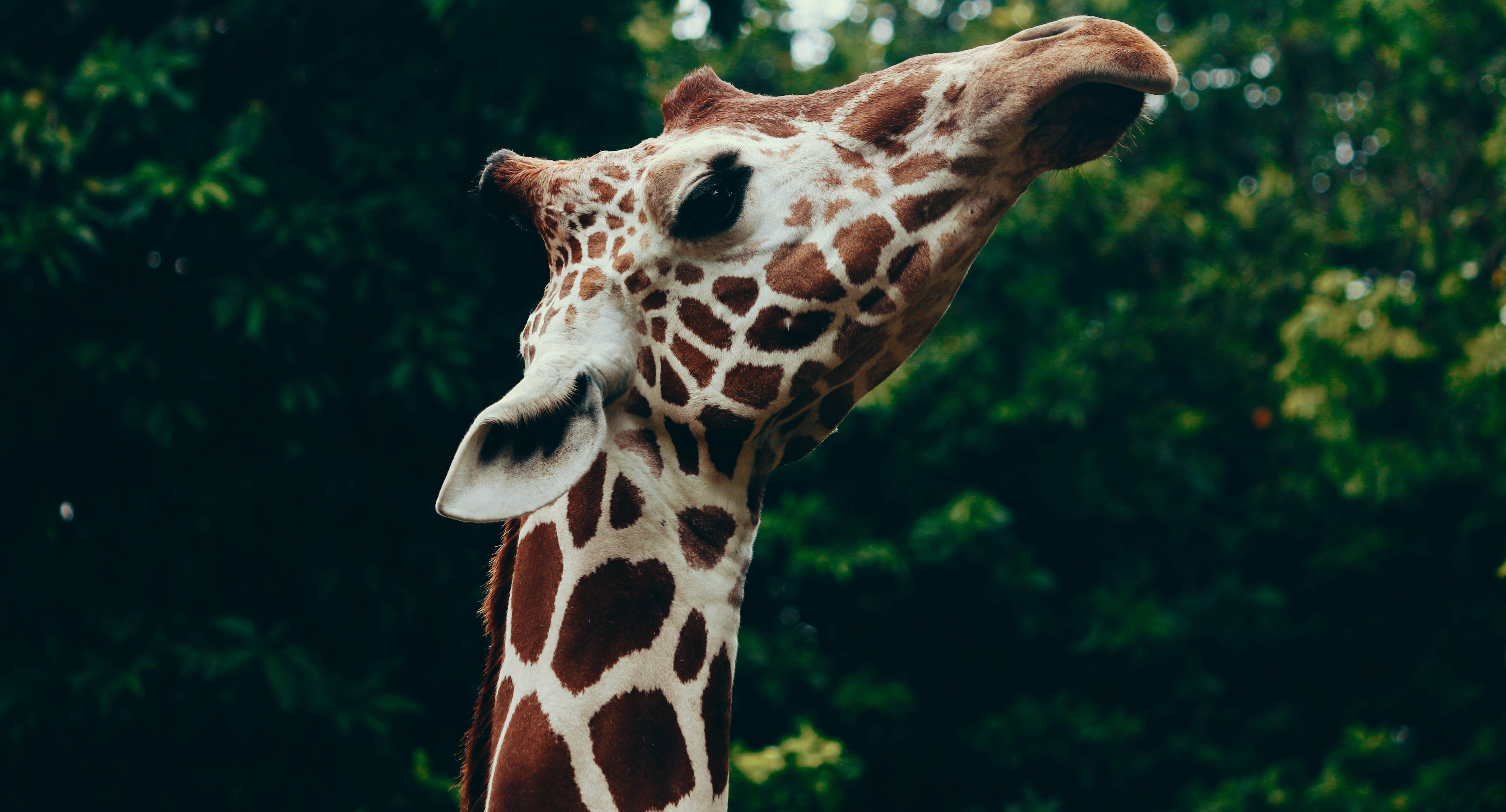Further Information
Appearance and anatomy
Fully grown giraffes stand 4.3–5.7 m (14.1–18.7 ft) tall, with males taller than females. The tallest recorded male was 5.88 m (19.3 ft) and the tallest recorded female was 5.17 m (17.0 ft) tall. The average weight is 1,192 kg (2,628 lb) for an adult male and 828 kg (1,825 lb) for an adult female with maximum weights of 1,930 kg (4,250 lb) and 1,180 kg (2,600 lb) having been recorded for males and females, respectively.
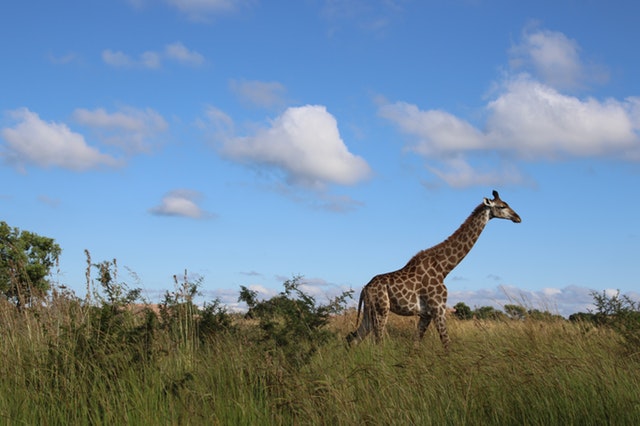
Despite its long neck and legs, the giraffe's body is relatively short. Located at both sides of the head, the giraffe's large, bulging eyes give it good all-round vision from its great height. Giraffes see in colour and their senses of hearing and smell are also sharp. The animal can close its muscular nostrils to protect against sandstorms and ants.
The giraffe's prehensile tongue is about 45 cm (18 in) long. It is purplish-black in colour, perhaps to protect against sunburn, and is useful for grasping foliage, as well as for grooming and cleaning the animal's nose. The upper lip of the giraffe is also prehensile and useful when foraging and is covered in hair to protect against thorns. The tongue, and inside of the mouth are covered in papillae.
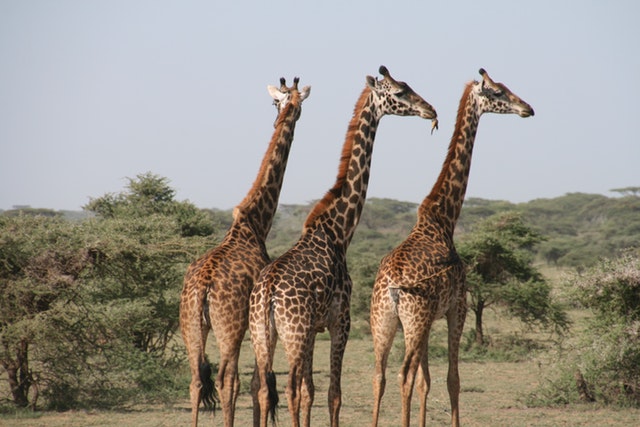
The coat has dark blotches or patches (which can be orange, chestnut, brown, or nearly black in colour) separated by light hair (usually white or cream in colour). Male giraffes become darker as they age. The coat pattern has been claimed to serve as camouflage in the light and shade patterns of savannah woodlands.
While adult giraffes standing among trees and bushes are hard to see at even a few metres' distance, they actively move into the open to gain the best view of an approaching predator, obviating any benefit that camouflage might bring. Instead, the adults rely on their size and ability to defend themselves.
However, camouflage appears to be important for calves, which spend a large part of the day in hiding, away from their mothers; further, over half of all calves die within a year, so predation is certainly important.
Therefore, it appears that the spotted coat of the giraffe functions as camouflage for the young, while adults simply inherit this coloration as a by-product. The skin underneath the dark areas may serve as windows for thermoregulation, being sites for complex blood vessel systems and large sweat glands. Each individual giraffe has a unique coat pattern.
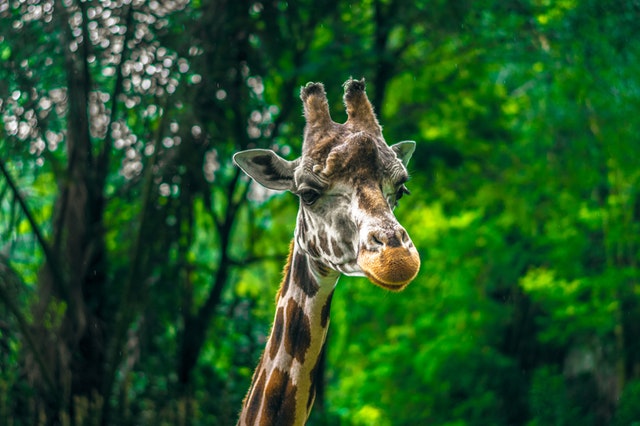
Skull and ossicones
Both sexes have prominent horn-like structures called ossicones, which are formed from ossified cartilage, covered in skin and fused to the skull at the parietal bones. Being vascularized, the ossicones may have a role in thermoregulation, and are also used in combat between males.
Appearance is a reliable guide to the sex or age of a giraffe: the ossicones of females and young are thin and display tufts of hair on top, whereas those of adult males end in knobs and tend to be bald on top.
Legs, locomotion, and posture
The front and back legs of a giraffe are about the same length. The radius and ulna of the front legs are articulated by the carpus, which, while structurally equivalent to the human wrist, functions as a knee. It appears that a suspensory ligament allows the lanky legs to support the animal's great weight.
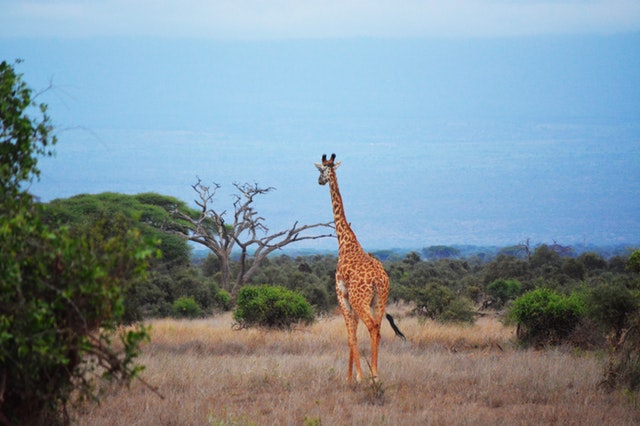
A giraffe has only two gaits: walking and galloping. Walking is done by moving the legs on one side of the body at the same time, then doing the same on the other side. When galloping, the hind legs move around the front legs before the latter move forward, and the tail will curl up. The animal relies on the forward and backward motions of its head and neck to maintain balance and the counter momentum while galloping.
A giraffe rests by lying with its body on top of its folded legs. To lie down, the animal kneels on its front legs and then lowers the rest of its body. To get back up, it first gets on its knees and spreads its hind legs to raise its hindquarters. It then straightens its front legs. With each step, the animal swings its head.
In captivity, the giraffe sleeps intermittently around 4.6 hours per day, mostly at night. It usually sleeps lying down, however, standing sleeps have been recorded, particularly in older individuals. Intermittent short "deep sleep" phases while lying are characterised by the giraffe bending its neck backwards and resting its head on the hip or thigh, a position believed to indicate paradoxical sleep.
